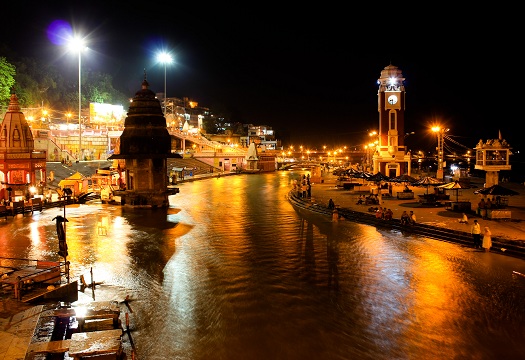
Arrival Delhi Airport / Delhi Railway Station, Meet & Assist further drive to Haridwar. Transfer to your Hotel. If time permits visit Mansadevi Temple, Chandidevi Temple, Daksha Mahadev Temples & Others. Also visit Har-ki-Pauri for Ganga Aarti. The 'Aarti' worship of the Ganga after sunset and the floating 'dia' (lamp) is a moving ritual. Back to your hotel, Night halt. Haridwar, lying at the feet of Shiva's hills, i.e., Shivaliks, in the Haridwar district of Uttaranchal Pradesh, is a doorway.Har ki Pauri: It is also known as Brahmakund and it is believed to be the place where divine nectar fell from the pitcher. It is the site for the famous Kumbh Mela which is celebrated in 12 years.Chandi Devi Temple: Situated on the top of the Neel Parvat, Chandi Temple was built in 1929 by Suchat Singh, the King of Kashmir.
Drive to Barkot via Mussoorie, enroute visit Kempty Fall and others. Later drive straight to Barkot, transfer to your Hotel. Overnight stay at Barkot.Weather - Generally pleasant in summer, the temperature ranges from 25-30 degree Celsius, Winter: The Days are pleasantly cool but the nights are cold,temp ranges from 10 deg to 05 deg. Barkot is situated at an elevation of 1,220mts above sea level in Uttarkashi district of Uttarakhand state. Barkot is a popular destination of northeast region of Uttarakhand state. Barkot is located 49kms from the sacred Yamunotri Dham. The magnificent Banderpoonch peak and other massive peaks of the Himalayan range are distinctly visible from Barkot. It is an ideal holidaying and adventure destination as the place offers many trekking excursions.
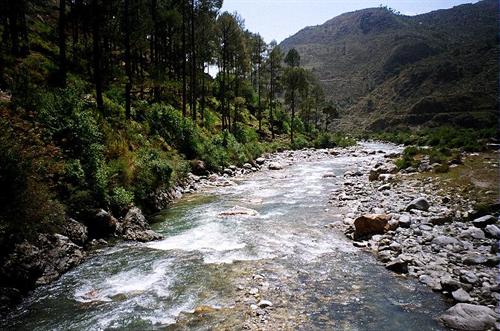
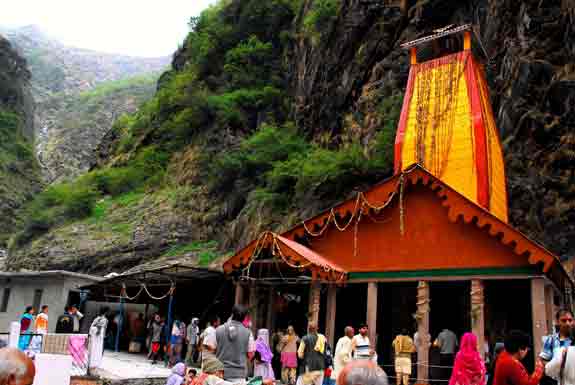
Early morning, Drive to Jankichatti/Phoolchatti, trek start from here to Yamunotri (6kms). Either by walk or by horse or by Doli at own cost. Arr. Yamunotri, One can cook rice by packing it in a cloth and dipping it in the hot water of the hot kund. Pilgrims take this cooked rice home as "Prasad". Here near the temple "Pooja" can be offered to Divya Shila, After taking bath in Jamunabai Kund's warn water and having "Darshan" of pious "Yamunaji" returning to Jankichatti. Return back to Barkot, Overnight stay. Yamunotri Temple: Maharani Gularia of Jaipur built the temple in the 19th Century. It was destroyed twice in the present century and rebuilt again. Surya Kund: There are a Number of thermal springs in the vicinity of the temple, which flows into numerous pools. The most important of these is Surya Kund.
Drive to Uttarkashi. Visit Vishwanath Temple & Others. Check in Hotel. Rest day at leisure. Night Halt. Uttarkashi is home to a number of ashrams and temples and also to the Nehru Institute of Mountaineering. The name of the town reflects its similarity to and location (as north of) the city of Kashi (Varanasi).Vishwanath temple - Vishwanath temple is one of the oldest Shiva temples in Northern India. Re-constructed in 1857 by Maharani Khaneti Devi of Tehri State in the ancient architectural style.As per Skunda Puran, Uttarkashi is known as ‘Saumya Varanasi’, the abode of Lord Shiva in Kaliyug and counted as one of the twelve Jyotirlingas.Weather - Generally hot in summer, the temperature ranges from 30-35 degree Celsius but nights is pleasant, Cold in winters
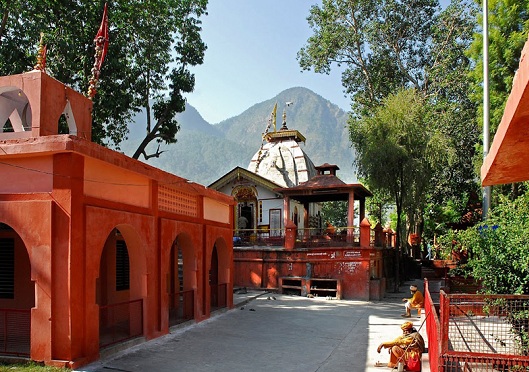
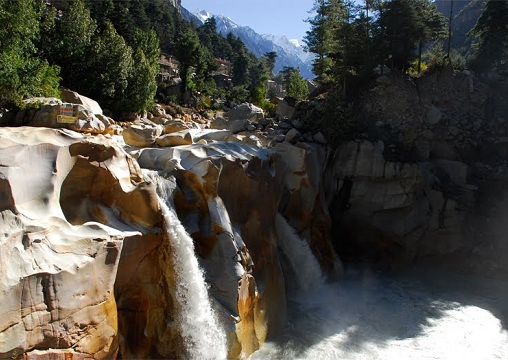
Early morning drive to Gangotri, enroute at Gangnani take a holy dip in Garam Kund, further drive to Gangotri via beautiful Harsil Valley. Harsil is famous for its nature beauty and for the majestic views of the Deodar trees, and mountains. On arrival at Shree Gangotri, take a holy dip in the sacred river Ganges which is also called Bhagirathi at its origin. Perform Pooja and Darshan, after that relax for some time in the lovely surroundings. Return back to Uttarkashi. Overnight stay at Uttarkashi. Gangotri Temple: The temple, constructed by the Gorkha General Amar Singh Thapa in the 18th Century, is situated on the right bank of Bhagirathi. Kedar Ganga Sangam: Around 100 Yards from the Ganga Temple flows the river Kedar Ganga. Starting from the Kedar Valle, this river meets the Bhagirathi on its left bank.
Drive straight to Guptkashi via Moolgarh & Lambgoan. Enroute you can see the beautiful river Mandakini at Tilwara. The Mandakini river comes from Kedarnath, drive alongside the river to reach Guptakashi. On arrival Check In at the Hotel, evening visit Ardh Narishwar Temple. Overnight stay at the Hotel.The name Gupt Kashi means "Hidden Benares. Mythology describes how when the Pandava brothers were searching for a glimpse of Shiva, Shivji first concealed himself at Gupt Kashi, but later fled from them further up the valley to Kedarnath, where the Pandavas finally got their wish fulfilled.Weather - Generally pleasant in summer, the temperature ranges from 25-30 degree Celsius. Cold in winters.
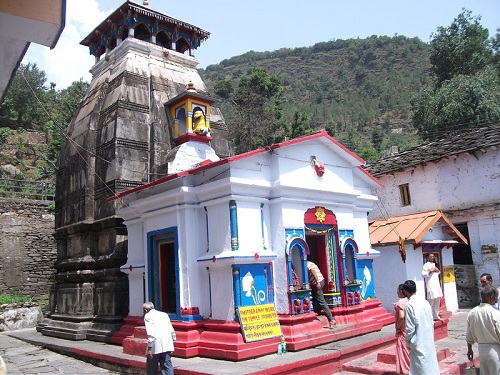
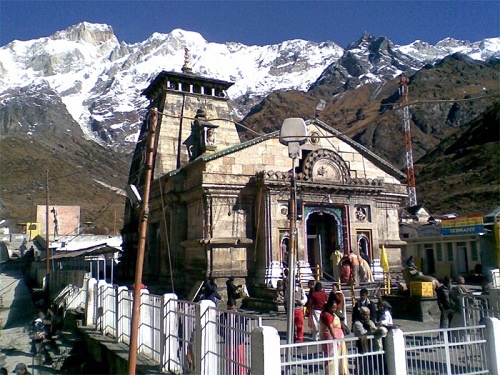
Morning drive to Phata (Helipad), transfer to Kedarnath by Helicopter. Visit Kedarnath Temple & return back to Phata. Later drive back to Guptkashi. Rest day at leisure. Overnight stay. Kedarnath: The Kedarnath shrine, one of the 12 jyotirlingas of Lord Shiva, is a scenic spot situated, against the backdrop of the majestic Kedarnath range. Kedar is another name of Lord Shiva, the protector and the destroyer.According to legend, the Pandavas after having won over the Kaurava in the Kurukshetra war, felt guilty of having killed their own brothers and sought the blessings of Lord Shiva for redemption.
Drive to Badrinath via Joshimath. Check in Hotel. Later at evening visit Badrinath Temple for Aarti. Overnight stay. Badrinath one of the 'Four Dhams' is one of the most celebrated pilgrimage spots of the country and is situated at an elevation of 3,133 meters, guarded on either side by the two mountain ranges known as Nar & Narayan with the towering Neelkanth Peak providing a splendid backdrop. This revered spot was once carpeted with wild berries. Thus the place got the name "Badri van", meaning "forest of berries". Tapt Kund : Natural thermal springs on the bank of the river Alaknanda, where it is customary to bathe before entering the Badrinath temple. Narad Kund : A recess in the river, near Tapt Kund, forming a pool from where the Badrinath idol was recovered.
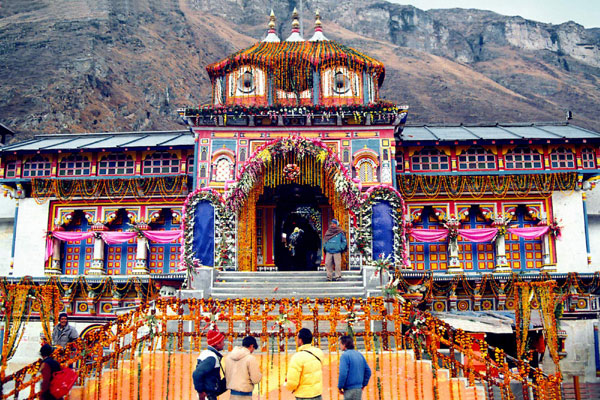
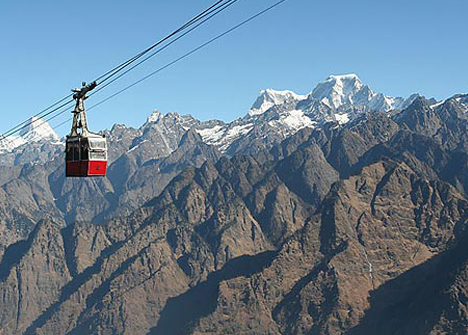
Early morning, pilgrims after having a bath in the Taptkund have the Darshan of Badrivishal. Brahamakapal is significant for Pinddan Shraddh of ancestors (Pitrus). There are other interesting sightseeing spot like Mana, Vyas Gufa, Maatamoorti, Charanpaduka, Bhimkund and the "Mukh" of the Saraswati River. Just within the three kms of Badrinathjee. Later drive back to Rudraprayag via Joshimath. Check in Hotel. Overnight stay.Joshimath is situated on the slopes above the confluence of the rivers Alaknanda and Dhauliganga. Of the four 'Maths' established by Adi Shankaracharya, Joshimath is the winter seat of Badrinath. The idol is brought down to Joshimath and installed in the temple for people to worship. There are many other temples in the township.
Drive to Rishikesh, the 'place of sages' is a celebrated spiritual town on the bank of Ganga and is surrounded by Shivalik range of the Himalayas on three sides. It is said that when Raibhya Rishi did hard penances, God appeared by the name of " Hrishikesh " and this area hence firth came to be known as Rishikesh. Check in Hotel. Later visit Rishikesh Temples & Sight Seeing – Laxman Jhulla, Ram Jhulla, Triveni Ghat, Bharat Mandir, Shivananda Ashram. At evening visit Ganga Aarti at Parmarth Ashram. Rishikesh is also famous for adventure sports like White Water Rafting, Camping, Rappelling, Rock Climbing, Cliff Jumping, Bungee Jump etc. Overnight stay. Laxman Jhula: Lakshman Jhula is on of the main attraction of Rishikesh. It is 450 ft long hanging bridge on the river Ganga which was built in 1939. According to myths and legends Laksman, brother of Lord Rama crossed Ganga River on a jute rope from this point.
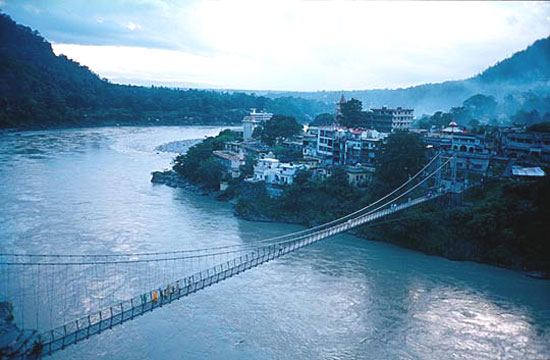
You will having breakfast first in hotel, after breakfast you will drive back to Delhi. On Arr. Delhi, transfer to the airport. Take the flight and back to home with lovely memories.